Imagine you’re in 1960’s America. The price of a gallon of gas is $0.34. Republican candidate Richard Nixon is running for office as the President of the United States. The Beatles’ latest tune plays on the radio. Mario Andretti and A.J. Foyt are stars on the USAC Championship car circuit, and Chet Wilson’s small block V-8 Chevy engine, known as “The Offy Killer,” has challenged the Offenhauser engine as the next dominant power plant in auto racing.
Despite World War II fading into the memories of the nation, several artifacts still remained from the war. Old wartime machinery could still be found if you scavenged hard enough, and some Americans took it upon themselves to gather such pieces as mementoes of their past. Others, however, set out to find new uses for the machines.
Those searching for new uses for the wartime relics included sprint car racers Russ Blevins and Hank Hanastad. Both Russ and Hank, although located on opposite ends of the country – Russ from Ohio and Hank from California – faced the same problem. As sprint car racers, their budgets were extremely slim. The dominant Chevy and Offy engines of the day carried an astronomical price tag, of which they couldn’t afford. Therefore, both men set out to find substitute engines to fill the voids of their sprint car operations.
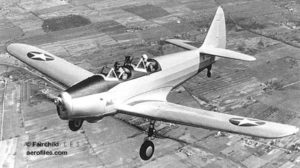
A PT-19 aircraft in action, sprint car racers around the country would by these planes for the Ranger engines after the war and refurbish them to fit their racers.
One of the more popular aircraft used for military training during the second World War was the PT-19, produced by the Fairchild Aircraft company from 1939 through the late 1940s. PT-19 aircraft were powered by inline six-cylinder engines (commonly referred to as 6-440C-5 engines), producing greater than 400 horsepower and weighing around 350lbs. While thousands of these aircraft were produced in New York, Maryland and Texas during the war, most of the aircraft found themselves outdated and parked by the late 1960’s.
Although it’s uncertain as to how Hank acquired his Ranger power plants, the legend goes that Russ made his first Ranger engine acquisition by purchasing six PT-19 aircraft for the sole purpose of utilizing their engines for his racer. One way or another, both racers found ways to get their hands on the PT-19 power plants and began tinkering with their pieces. By altering the compression ratio and lightening the internal parts of the engines, both men found ways to make their aircraft engines competitive.
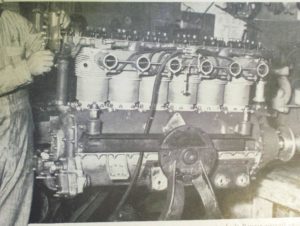
A Ranger engine being modified for racing purposes
The final result of their modifications found the Ranger engines being mounted upside down (or in rare cases sideways), as well as backwards in the car, thus resulting in an unorthodox look for the engine compartment of their sprinters. Despite their unusual positioning, the Ranger engines saved racers weight in some cases, as the air cooled engines didn’t require a radiator! Most racers found that they could purchase and modify a Ranger engine and be race ready for approximately $4,000, or approximately 1/3 the price of the more expensive Offy engines of the day. Combine the relatively simple adjustments with the overall cost savings, and slim budgeted racers such as Russ and Hank had found themselves an alternative sprint car engine without breaking the bank.
Russ Blevins went on to race his Ranger powered sprinter himself, and even restored his sprinter later in life as featured in this 2005 piece from the Hot Rod Network. While Russ raced his creation, Hank Hamastad hired drivers to pilot his sprinter and won several races on the California circuits. Hank’s most famous hire was none other than a young Jan Opperman in 1967, with Opp piloting the Ranger powered sprinter in Northern California’s NARC series and winning several races before being discovered by a Speedway Motors employee, Jerry Janssen, in 1968 and moving to Lincoln, Nebraska where his career would begin to reach new heights. Opp is pictured in victory lane with Hank’s machine in the cover photo of this article.
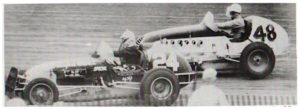
Bert Hellmueller #48 races his Ranger powered sprinter with A.J. Foyt, 1956.
It’s important to note that Hank and Russ were not the only racers to utilize Ranger engines for their sprint cars, as several other drivers around the country did the same. This included, Jack Hewitt’s father Don, Tom Cherry and Bert Hellmueller of the Mid-West until the engines were outlawed in the late 1960’s.
The modification of the PT-19 aircraft engine is a great example of how sprint car racers of the not-so-distant past used whatever they could find to put their racers on the track. In a time where entire race-ready sprint cars can be purchased online with the click of a mouse, I think it’s important to remember the innovations of the generations of the past. There was a time where you had to make every single part yourself, even if that meant dragging home six airplanes in hopes that you could make one of their engines fit into your racer.
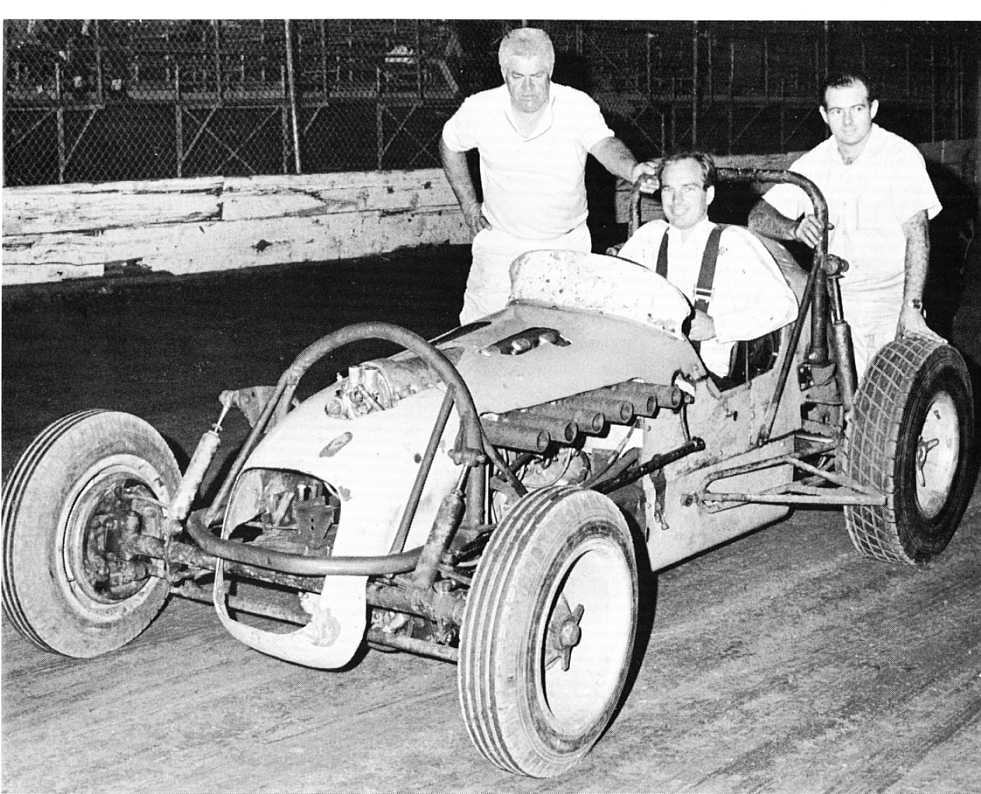
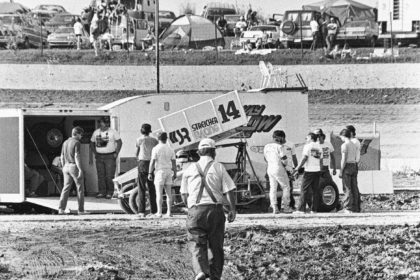
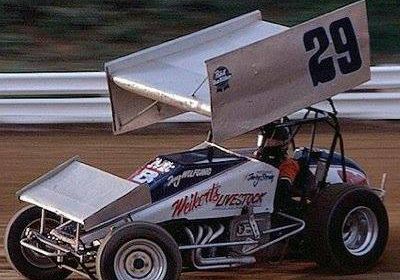
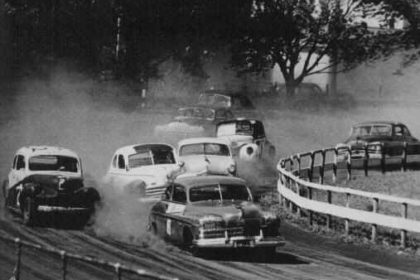
2 Comments
Slowjoe
July 16, 2018 at 3:27 amRemember seeing the rangers run at several tracks in Northern California with Jan and a couple others driving, Champion,Calistoga,Vallejo, Gridley, are just some of the track where NARC raced. My dad who has since passed away, would tell me where the engine originally came from and how they were modified for racing… Guess I should have paid more attention then….This article brought back good memories. Thanks for posting
David Weber
July 16, 2018 at 7:45 pmGreat stuff! I’d heard about the Ranger engines somewhere in the past. Maybe Open Wheel, something like that. I live in Lincoln, NE, and was an Opperman fan since I was a very young kid. I’d really like to read a history of Speedway’s 4x cars that Opp, Wolfgang, Lloyd Beckman and others drove over the years.
Keep up the great work — your twitter feed is one of my favorites.